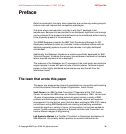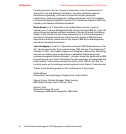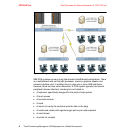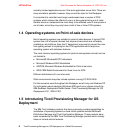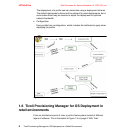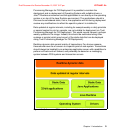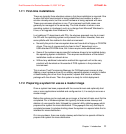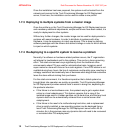Chapter 1. Introduction 5
Draft Document for Review November 15, 2007 3:27 pm 4372ch01.fm
These peripherals are connected via special connectors and via USB interfaces
which may be carrying the standard 5 Volts or powered USB with 12 or 24 Volts.
The system typically runs only one application which is developed and/or tailored
specifically to serve the purpose of the system. Under normal operation the end
user will only use the application and not think about or have access to the
underlying operating system.
By separating the point-of-sales systems from any traditional workstations in a
store it is possible to limit the risk of infecting the point-of-sales systems with
viruses, worms and other malware. The separation is done using VLANs, routers
and/or firewalls depending on the required security level.
The retail environment is highly distributed, especially large retail chains, which
may have one or more data centers and a significant number of stores distributed
across the country or the world. The IT skills in a store is limited, resulting in a
strong focus on standardization and on remote managability.
The typical lifetime of a point-of-sale system is five to seven years, which is
somewhat more than a normal office workstation, be it a desktop or a notepad.
During the lifetime of a point-of-sale system, the operating system is unlikely to
change more than one or two times. Applications may be updated one or two
times a year.
1.3 The role and importance of IT
For any store or warehouse, the point-of-sale system is essential for business.
This is where goods are exchanged for money. Without the capability to handle
these transactions automatically, a significant amount of back-office work is
required and some parts of the transactions may not even be possible, such as
payments by use of credit cards and printing out receipts.
It’s easy to visualize what happens if a store suddenly has a limited capability of
processing sales: The remaining lanes will have growing queues, causing
reduced customer satisfaction, and if the situation happens more than once in a
quarter, some customers will probably place their business elsewhere.
For this reason, most larger warehouses have several layers of redundancy. First
of all, there are usually more lanes than needed except for hollidays and
seasonal occasions. Additionally, the network is typically kept isolated from
networks used by regular workstations, and made redundant so half the POS
systems are connected to one swtich and the other half to another. Application
servers should also be set up for high availability, both with respect to
independency in an individual store, and with the capability to fail over to a



